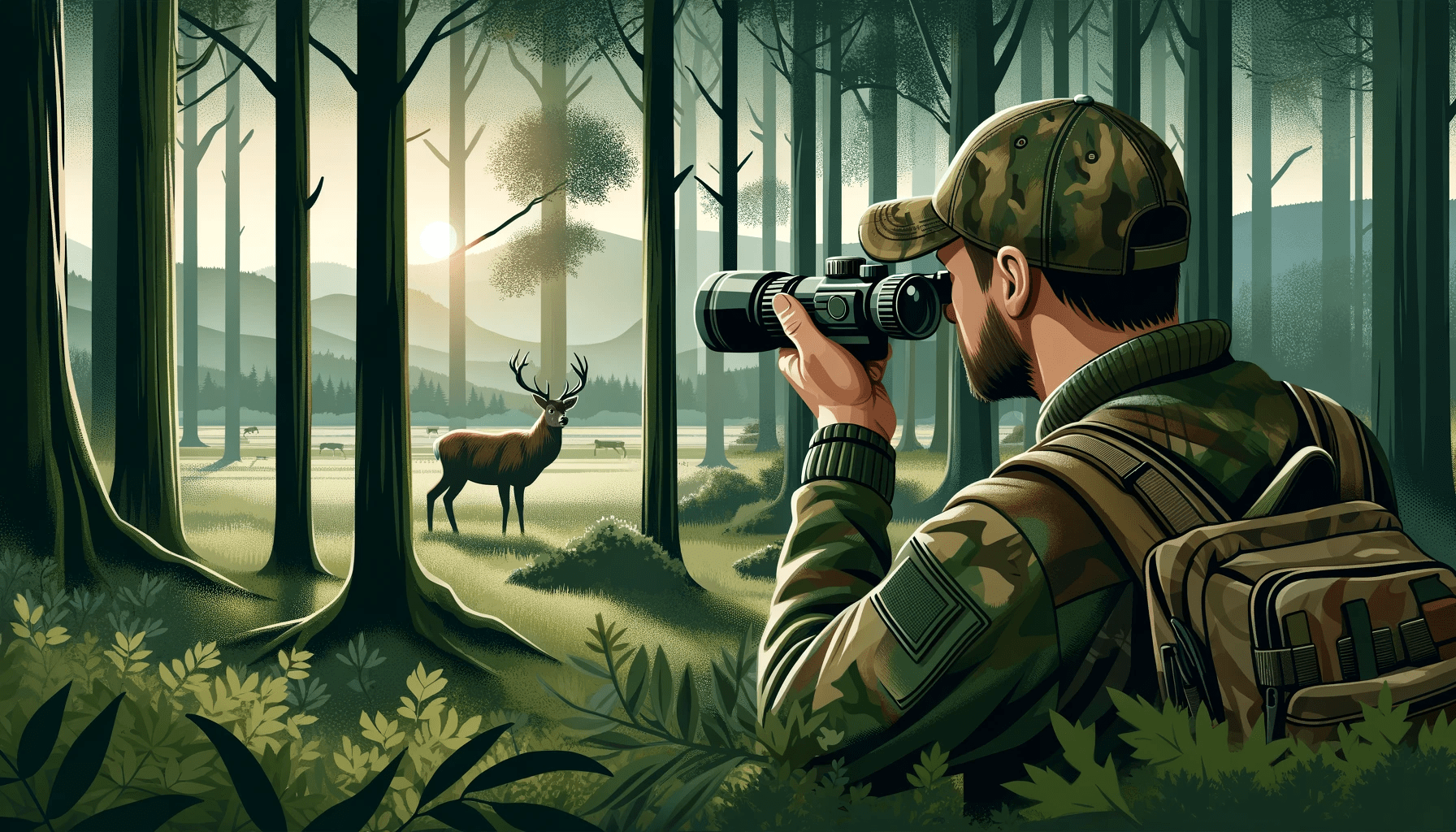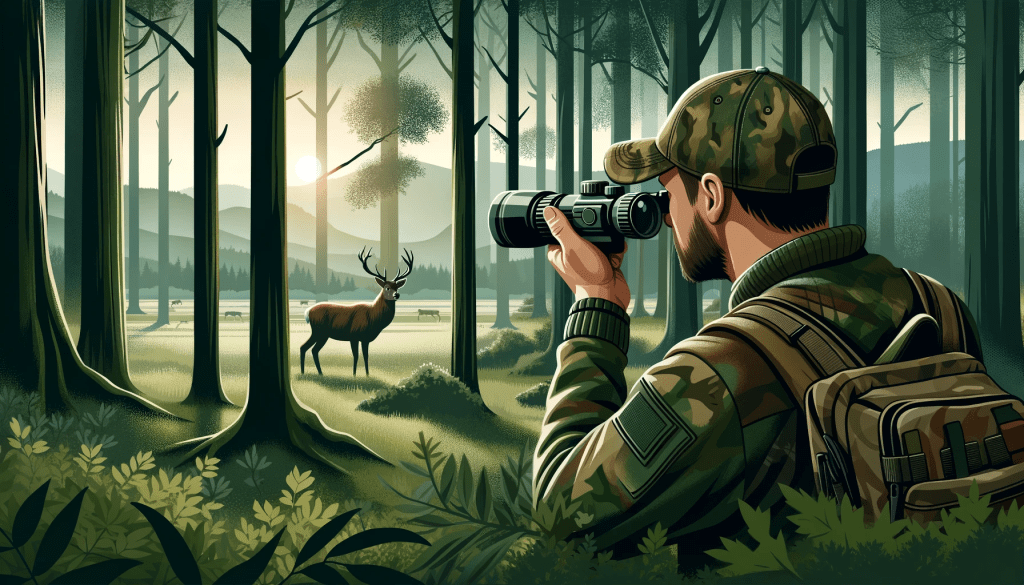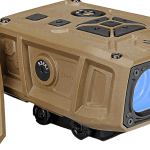

Imagine this: you’re standing on a lush green fairway, the sun casting a warm glow over the meticulously maintained golf course. In your hand, you hold not just a tool but a key to precision and success – a range finder. This device, once a luxury, has now become an indispensable aid for golfers, hunters, and outdoor enthusiasts. But in a market brimming with options, how do you choose the right one?
In this comprehensive guide, we delve into the world of rangefinders. From their humble beginnings to becoming modern marvels of technology, range finders have revolutionized how distances are measured in various activities. Whether you’re calculating the distance to the next hole on the golf course or tracking a distant target on a hunting expedition, understanding these tools’ nuances can elevate your experience.
Ready to enhance your accuracy and enjoyment in your activities? Let’s dive in and explore the world of rangefinders – your companion for precision in every endeavor.
Table of Content
- Understanding Rangefinders
- Types of Rangefinders
- Key Features to Consider
- Application-Specific Insights
- Budget Considerations and Top Brands
- Making the Right Choice: Tips for Buyers
- FAQs
- Conclusion
Understanding Rangefinders
At its core, a range finder is a precision instrument designed to measure distance accurately. These devices, which have their roots in military applications, have evolved over the years into compact, user-friendly gadgets with a plethora of applications in various fields. Today, rangefinders employ technologies like lasers, GPS, and optics to deliver accurate distance measurements, a critical factor in activities where precision is paramount.
Initially developed for military purposes, rangefinders were used for scouting and artillery range estimation. However, as technology advanced, so did their accessibility and usability. They shrank in size and grew in functionality, becoming a staple in the golf bag and the hunter’s toolkit.
Modern rangefinders come in three primary types: laser, GPS, and optical. Each type has its unique method of operation and ideal use cases. Laser range finders, for instance, use a laser beam to calculate the distance to an object. When you aim at a target and activate the device, it emits a laser beam; the time it takes for the beam to hit the target and bounce back is measured, and from this, the distance is calculated. This technology is renowned for its accuracy and reliability, making it a favorite among golfers and hunters.
On the other hand, GPS range finders utilize satellite data to determine your location and calculate distances to various points on a pre-mapped course. These are particularly popular on golf courses, where they can provide distances to hazards, greens, and other significant course features. They offer convenience and a broader view of the terrain, albeit sometimes at the cost of the pinpoint accuracy that laser range finders boast.
Lastly, optical range finders, the simplest among the three, estimate distance based on visual cues. They function similarly to binoculars, using lenses and manual adjustments to gauge the distance. While not as precise as their laser and GPS counterparts, optical range finders offer an essential and often more affordable option for distance measurement.
Types of Rangefinders
Laser Range Finders:
These are the crown jewels of precision in the world of range finders. Using advanced laser technology, they measure the time it takes for a laser beam to bounce back from the target. This method provides highly accurate measurements, making them ideal for golfing, where precision to the flagstick is essential, and for hunting, where accurately judging the distance to a game animal can be the difference between success and missed opportunity. They are typically compact, easy to use, and reliable in various conditions, although they require a clear line of sight to the target.
GPS Rangefinders:
The tech-savvy golfer’s best friend, GPS range finders, uses satellite data to determine distances. These devices are pre-loaded with maps and data of golf courses, offering valuable insights into the course layout, including distances to hazards, greens, and doglegs. While they don’t provide the laser-like precision of their namesake, they are handy for getting a comprehensive overview of the course. However, their effectiveness depends on the accuracy of the pre-loaded course data and the device’s ability to receive clear satellite signals.
Optical Range Finders:
The traditionalist’s choice of optical range finders is more akin to classic binoculars. They use lenses and manual adjustments to estimate distances. While they lack the high-tech flair of laser and GPS range finders, they are simple and do not rely on batteries or electronic components. This simplicity makes them durable and often more affordable, though at the cost of the precision and convenience offered by more modern types.
Key Features to Consider
When choosing a range finder, several key features stand out as particularly important, regardless of the type:
Accuracy: The hallmark of a good range finder. In golf, an accurate measurement can inform club selection and shot strategy. In hunting, it can mean the difference between a humane, clean shot and a miss. Look for devices that boast high accuracy, typically within plus or minus one yard.
Durability: A durable range finder is essential whether you’re on a rugged hunting trip or playing a round of golf in varying weather. Look for devices with robust construction and weatherproofing features like water resistance.
Display Visibility: A range finder is only as good as its ability to convey information. Opt for models with bright, clear displays readable in various lighting conditions, from the bright midday sun to overcast mornings.
Battery Life: Long battery life ensures your device is ready when needed, especially for laser and GPS range finders. Consider the battery life advertised and check user reviews for real-world insights into how often you’ll need to recharge or replace batteries.
Application-Specific Insights
Golfing with Precision
For golfers, the correct range finder is akin to having a personal caddie who knows every inch of the course. When choosing a range finder for golf, prioritize features like slope adjustment technology, which calculates the change in elevation between you and the target, thereby giving you a more accurate distance reading. Another helpful feature is the ‘Pin Seeker’ or ‘Flag Lock,’ which helps golfers quickly lock onto the flag even with shaky hands. Remember, while a range finder can significantly enhance your game, checking the rules of your local course or tournament regarding slope features is essential.
Hunting – Gaining the Edge
Hunting demands precision, and a range finder can be your best tool for achieving it. Look for a range finder that can effectively filter out ‘noise’ from the surroundings, like branches or bushes, and focus on the distant target. A model with a high degree of magnification and can measure longer distances is ideal. Additionally, features like Angle Intelligence, which calculates the angle of your shot and adjusts the distance accordingly, can be invaluable, especially in uneven terrain.
Beyond Sports – Other Uses of Range Finders
Range finders have found a place in activities beyond sports. Bird watchers and wildlife observers utilize them to measure distances to animals without causing any disturbance. In construction and surveying, precise distance measurements are crucial for planning and execution. Even photographers and filmmakers find range finders beneficial for framing shots, especially in vast natural landscapes.
Budget Considerations and Top Brands
Range finders vary significantly in price, and choosing the right one involves balancing cost with features. Entry-level models can be under $100, while high-end devices with advanced features can go over $1000. Top brands like Nikon, Bushnell, and Leica offer a range of models catering to different needs and budgets. When considering a purchase, consider the device’s longevity and reliability, as a more expensive model from a reputable brand can offer better value in the long run.
Making the Right Choice: Tips for Buyers
To make an informed choice, consider these tips:
• Define your primary use for the range finder to narrow down your options.
• Prioritize the features that are most important for your activity.
• Read user reviews and testimonials to gauge real-world performance and reliability.
• Pay attention to the ergonomics and ease of use. A range finder should be comfortable and intuitive.
Frequently Asked Questions (FAQs)
- Can range finders be used in all weather conditions? Many range finders are built to withstand various weather conditions. Look for waterproof or weather-resistant models if you expect to use them in rain or fog.
- Are range finders challenging to use? Modern range finders are designed to be user-friendly. Most models offer simple point-and-click functionality, and higher-end models have more intuitive features.
- What are the primary uses of range finders in everyday life? Range finders are used in various everyday activities, including sports like golf and hunting, photography, construction, and even in some consumer electronics for precise measurements.
- How do range finders contribute to scientific research? Range finders are used in fields like astronomy to measure celestial distances, environmental studies for mapping and surveying, and many other areas where precise distance measurements are crucial.
- What should I consider when buying a range finder? Key considerations include the type of range finder (optical, laser, ultrasonic, infrared), its accuracy, range, size, ease of use, and specific features relevant to your intended use, such as waterproofing for outdoor activities.
Conclusion
Choosing the right range finder is about understanding your needs, the most essential features, and how you plan to use the device. Whether you’re a golfer, hunter, bird watcher, or involved in other outdoor activities, the correct range finder can enhance your experience and performance. When deciding, consider factors like accuracy, durability, battery life, and budget. With this guide, you can find the perfect range finder that suits your needs and helps you achieve precision in every endeavor.







